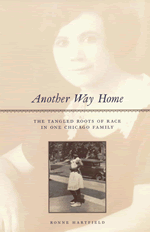Towards a Dialogic Understanding
Politics And Culture
2003-07-08
Victor Kulkosky
Good morning. I’m talking today about a work in progress, so you’ll get more questions than answers this time around. Maybe you’ll get the answers at the next CSA conference, if there is one. I think most of us here agree that one of the main missions of cultural studies is to tell or listen to amplify the untold or undertold story. So for me, that brings up this question: How to tell an emerging story that’s still in search of the language for telling it?
People in interracial or multiracial families find themselves facing this challenge. I find myself in this situation. I’m married to a Black woman, who has a half-sister many people assume is white, who in turn has among her children two girls with red hair and blue eyes and two boys many people would label black. Our little Rainbow Coalition claims African, Lithuanian, German, Irish, Cherokee, English and Dutch descent, and we share genes. What are we?
Heather Dalmage, in her book Tripping on the Color Line, (1999) observes: “Because they do not fit into the historically created, officially named, and socially recognized categories, members of multiracial families are constantly fighting to identify themselves for themselves. A difficulty they face is the lack of language available to address their experiences.” Dvora Yanow (2003), in her study of the relationship between racial/ethnic category making and government policy, writes: “Individuals who cannot find their identity in available categories become invisible, in a sense: without a label, without a vocabulary, their stories are untellable and they themselves are unnarratable.”
…A lot of law and discourse and violence have gone into policing America’s racial borders. White supremacy in the U.S. depends on certainty about who is and who isn’t White. Omi and Winant (1994) refer to the continuing efforts to draw and police racial borders as racial formation, which is carried out through a series of what they call racial projects. They define race as: “a concept which signifies and symbolizes social conflicts and interests by referring to different types of human bodies.” They make this major point, “we should think of race as an element of social structure rather than an irregularity within it; we should see race as a dimension of human representation rather than an illusion.” So I would add that it’s not a question of whether we can and should become color blind – it’s neither possible nor desirable — but about what we see when we see color. Omi and Winant see the concept of race evolving through racial formation, “the sociohistorical process by which racial categories are created, inhabited, transformed and destroyed.” They tell us that, “racial formation is a process of historically situated projects in which human bodies and social structures are represented and organized.”…
Read the entire article here.



